A Versatile, Machine-Learning-Enhanced RF Spectral Sensor for Developing a Trunk Hydration Monitoring System in Smart Agriculture
Abstract
1. Introduction
1.1. State of the Art
1.2. Proposed Approach and Application
2. Main Architecture and Materials
2.1. The Core HW Components
2.1.1. Raspberry Pi
2.1.2. NanoVNA
2.2. Custom PCB Design Elements
- 1
- A USB interface chip BQ2409 (Texas Instruments, Dallas, TX, USA): This serves to connect the system with a V battery. It facilitates charging the battery using standard power cables (similar to the one utilized for the Raspberry Pi) via the micro USB port, even while the system is operational.
- 2
- A step-up DC/DC converter TLV61070a (Texas Instruments, Dallas, TX, USA): It converts the V output from the battery to 5 V for powering both the Raspberry Pi and the RTC.
- 3
- An RTC TPL5110 (Texas Instruments, Dallas, TX, USA): It is used for the time control of the system in automatic acquisition. It is linked to a digital potentiometer (MAX5161 (Maxim Integrated Products, Sunnyvale, CA, USA) [49]. Additionally, the real time clock (RTC) is connected to a PMOS transistor (Infineon IRLML2246 (International IoR Rectifier, CA, USA)) [50], which is responsible for controlling the 5 V line. This control allows for a complete deep sleep of the Raspberry Pi when it is not in use.
- 4
- Temperature and humidity sensors SHT40 (Sensirion, Staefa ZH, Switzerland): This sensor is used for monitoring both internal and external temperature and humidity, with humidity accuracy of ±1.8% RH and temperature accuracy of ±0.2 °C. It is directly connected to the Raspberry Pi via the I2C protocol.
Battery Management
2.3. External Patch Antenna
3. Modes of Operation
4. Case Study: Greenwood Moisture Content Detection Using a Patch RF Antenna
4.1. Experimental Setup
4.2. Statistical Analysis
4.3. Results and Discussion
5. Conclusions
6. Future Work
Author Contributions
Funding
Institutional Review Board Statement
Informed Consent Statement
Data Availability Statement
Acknowledgments
Conflicts of Interest
References
- Ruttan, T.G.; Grossman, B.; Ferrero, A.; Teppati, V.; Martens, J. Multiport VNA measurement. IEEE Microw. Mag. 2008, 9, 56–69. [Google Scholar] [CrossRef]
- Rytting, D. ARFTG 50 year network analyzer history. In Proceedings of the 71st ARFTG Microwave Measurement Conference, Atlanta, GA, USA, 20 June 2008; pp. 1–8. [Google Scholar]
- Pozar, D.M. Microwave and RF Design of Wireless Systems; John Wiley & Sons: Hoboken, NJ, USA, 2000. [Google Scholar]
- Fung, A.; Dawson, D.; Samoska, L.; Lee, K.; Gaier, T.; Kangaslahti, P.; Oleson, C.; Denning, A.; Lau, Y.; Boll, G. Two-port vector network analyzer measurements in the 218–344- and 356–500-GHz frequency bands. IEEE Trans. Microw. Theory Tech. 2006, 54, 4507–4512. [Google Scholar] [CrossRef]
- Bobowski, J.S.; Johnson, T. Permittivity measurements of biological samples by an open-ended coaxial line. arXiv 2020, arXiv:2007.07343. [Google Scholar] [CrossRef]
- Wang, Y.; Shang, X.; Ridler, N.M.; Huang, T.; Wu, W. Characterization of dielectric materials at WR-15 band (50–75 GHz) using VNA-based technique. IEEE Trans. Instrum. Meas. 2019, 69, 4930–4939. [Google Scholar] [CrossRef]
- Avşar Aydin, E. Low-cost Vector Network Analyzer for Biomedical Applications. Int. J. Eng. 2019, 32, 400–404. [Google Scholar]
- Iaccheri, E.; Berardinelli, A.; Tartagni, M.; Ragni, L. Affordable microwave soil moisture detector. IEEE Sensors J. 2024, 24, 7770–7777. [Google Scholar] [CrossRef]
- Luciani, G.; Berardinelli, A.; Crescentini, M.; Romani, A.; Tartagni, M.; Ragni, L. Non-invasive soil moisture sensing based on open-ended waveguide and multivariate analysis. Sens. Actuators A Phys. 2017, 265, 236–245. [Google Scholar] [CrossRef]
- Franceschelli, L.; Iaccheri, E.; Franzoni, E.; Berardinelli, A.; Ragni, L.; Mazzotti, C.; Tartagni, M. Non-intrusive microwave technique for direct detection of concrete compressive strength monitoring by multivariate modeling. Measurement 2023, 206, 112332. [Google Scholar] [CrossRef]
- Franceschelli, L.; Ciricugno, C.; Di Lorenzo, M.; Romani, A.; Berardinelli, A.; Tartagni, M.; Correale, R. Real-time gas mass spectroscopy by multivariate analysis. Sci. Rep. 2023, 13, 6059. [Google Scholar] [CrossRef]
- Contreras, J.; Goodnight, A.; Parker, Q.; Simon, N.; Theumer, J.; Zajić, A. A Non-Destructive Method to Estimate Leaf Water Content Using the Ka-Band. In Proceedings of the International Opportunity Research Scholars Symposium (ORSS), Atlanta, GA, USA, 23 April–2 June 2023; pp. 29–33. [Google Scholar]
- Zeng, J.; Li, Z.; Tang, Z.; Chen, Q.; Bi, H.; Zhao, L. The measurement and model construction of complex permittivity of corn leaves at the main frequency points of L/S/C/X-band. IOP Conf. Ser. Earth Environ. Sci. 2014, 17, 012055. [Google Scholar] [CrossRef]
- Kremer, F.; Schönhals, A. Broadband Dielectric Spectroscopy; Springer Science & Business Media: New York, NY, USA, 2002. [Google Scholar]
- Nelson, S. Dielectric Properties of Agricultural Materials and Their Applications; Academic Press: Cambridge, MA, USA, 2015. [Google Scholar]
- Roblin, P. Nonlinear RF Circuits and Nonlinear Vector Network Analyzers: Interactive Measurement and Design Techniques; Cambridge University Press: Cambridge, UK, 2011. [Google Scholar]
- Vidotto, M.I.; Veiras, F.E.; Sorichetti, P.A. Software defined radio for vector network analysis: Configuration, characterization and calibration. Measurement 2022, 189, 110468. [Google Scholar] [CrossRef]
- Masood, E.H.H. Accessible Broadband Network Analysis. Ph.D. Thesis, Massachusetts Institute of Technology, Cambridge, MA, USA, 2002. [Google Scholar]
- Pejcinovic, B. Teaching High-Frequency Circuit Design in Online Environment. In Proceedings of the 44th International Convention on Information, Communication and Electronic Technology (MIPRO), Opatija, Croatia, 27 September–1 October 2021; pp. 1559–1564. [Google Scholar]
- Operating HP 8407A Network Analyser. Available online: https://nanovna.com/ (accessed on 9 May 2024).
- Jumaa, L.F.; Mezaal, Y.S.; Al-Hilali, A. An experimental study by employing Nano VNA in microwave devices. Int. J. Nonlinear Anal. Appl. 2022, 13, 3917–3928. [Google Scholar]
- Derickson, D.; Jin, X.; Bland, C. The NanoVNA Vector Network Analyzer: This New Open-Source Electronic Test and Measurement Device Will Change Both Remote and In-Person Educational Delivery of Circuits, Electronics, Radio Frequency and Communication Laboratory Course Delivery. In Proceedings of the ASEE Pacific Southwest Conference–“Pushing Past Pandemic Pedagogy: Learning from Disruption”, Virtual, 23 April 2021. [Google Scholar]
- NanoVNA V2 Product Page. Available online: https://nanorfe.com/nanovna-v2.html (accessed on 22 May 2024).
- Rather, N.; Simorangkir, R.B.; O’Donnell, C.; Gawade, D.R.; Buckley, J.L.; O’Flynn, B.; Tedesco, S. A novel robot based data acquisition methodology for chipless RFID systems. In Proceedings of the 13th International Conference on RFID Technology and Applications (RFID-TA), Aveiro, Portugal, 4–6 September 2023; pp. 49–52. [Google Scholar]
- Cataldo, A.; De Benedetto, E.; Schiavoni, R.; Monti, G.; Tedesco, A.; Masciullo, A.; Piuzzi, E.; Tarricone, L. Portable microwave reflectometry system for skin sensing. IEEE Trans. Instrum. Meas. 2022, 71, 1–8. [Google Scholar] [CrossRef]
- Aichholzer, A.; Schuberth, C.; Mayer, H.; Arthaber, H. Microwave testing of moist and oven-dry wood to evaluate grain angle, density, moisture content and the dielectric constant of spruce from 8 GHz to 12 GHz. Eur. J. Wood Wood Prod. 2018, 76, 89–103. [Google Scholar] [CrossRef]
- Torgovnikov, G.I.; Torgovnikov, G.I. Interaction between the electromagnetic field and wood. Main features of dielectric properties of wood. In Dielectric Properties of Wood and Wood-Based Materials; Springer: Berlin/Heidelberg, Germany, 1993; pp. 1–19. [Google Scholar]
- Camuffo, D. Standardization activity in the evaluation of moisture content. J. Cult. Herit. 2018, 31, S10–S14. [Google Scholar] [CrossRef]
- Bět’ák, A.; Zach, J.; Misák, P.; Vaněrek, J. Comparison of wood moisture meters operating on different principles of measurement. Buildings 2023, 13, 531. [Google Scholar] [CrossRef]
- Dietsch, P.; Franke, S.; Franke, B.; Gamper, A.; Winter, S. Methods to determine wood moisture content and their applicability in monitoring concepts. J. Civ. Struct. Health Monit. 2015, 5, 115–127. [Google Scholar] [CrossRef]
- Tamme, V.; Muiste, P.; Tamme, H. Experimental study of resistance type wood moisture sensors for monitoring wood drying process above fibre saturation point/Takistus-tüüpi puidu niiskuse andurite eksperimentaalne uurimine puidu kuivatamise monitooringul niiskussisaldustel üle kiu küllastuspunkti. For. Stud. 2013, 59, 28–44. [Google Scholar]
- Brashaw, B.K.; Wang, X.; Ross, R.J.; Pellerin, R.F. Relationship between stress wave velocities of green and dry veneer. For. Prod. J. 2004, 54, 85–89. [Google Scholar]
- Valancogne, C.; Nasr, Z. Measuring Sap Flow in the Stem of Small Trees by a Heat Balance Method. HortScience 1989, 24, 383–385. [Google Scholar] [CrossRef]
- Lascano, R.J.; Goebel, T.S.; Booker, J.; Baker, J.T.; Gitz, D.C., III. The stem heat balance method to measure transpiration: Evaluation of a new sensor. Agric. Sci. 2016, 7, 604–620. [Google Scholar] [CrossRef][Green Version]
- Schimleck, L.R.; Evans, R.; Matheson, A.C. Estimation of Pinus radiata D. Don clear wood properties by near-infrared spectroscopy. J. Wood Sci. 2002, 48, 132–137. [Google Scholar] [CrossRef]
- Vallejos, C.; Grote, W. Wood moisture content measurement at 2.45 GHz. In Proceedings of the SBMO/IEEE MTT-S International Microwave and Optoelectronics Conference (IMOC), Belem, Brazil, 3–6 November 2009; pp. 221–225. [Google Scholar]
- Chang, L.; Zhang, G.; Wang, H. Triple-band microstrip patch antenna and its four-antenna module based on half-mode patch for 5G 4× 4 MIMO operation. IEEE Trans. Antennas Propag. 2021, 70, 67–74. [Google Scholar] [CrossRef]
- Wu, T.; Su, H.; Gan, L.; Chen, H.; Huang, J.; Zhang, H. A compact and broadband microstrip stacked patch antenna with circular polarization for 2.45-GHz mobile RFID reader. IEEE Antennas Wirel. Propag. Lett. 2013, 12, 623–626. [Google Scholar] [CrossRef]
- Paolini, G.; Fazzini, E.; Trovarello, S.; Amato, D.; Masotti, D.; Costanzo, A. An Innovative Multi-Port LoRa-Based Wireless Node for Railway Signaling and Positioning. IEEE J. Radio Freq. Identif. 2024, 8, 618–626. [Google Scholar] [CrossRef]
- Gok, A.B.; Masotti, D.; Costanzo, A. Co-Location of PV Panel with Meshed Antenna Array for Inter-Satellite Energy Transmission. IEEE J. Radio Freq. Identif. 2024, 8, 516–525. [Google Scholar] [CrossRef]
- Chatzichristodoulou, D.; Paolini, G.; Quddious, A.; Masotti, D.; Costanzo, A.; Vryonides, P.; Nikolaou, S. Dual Frequency MIMO Rectenna with Two-Branch Rectifier and Common Power Storage Unit. In Proceedings of the 16th European Conference on Antennas and Propagation (EuCAP), Madrid, Spain, 27 March–1 April 2022; pp. 1–5. [Google Scholar]
- Trovarello, S.; Aldrigo, M.; Masotti, D.; Dragoman, M.; Costanzo, A. Design of an Integrated Rectenna on Multi-layer High-Resistivity Silicon Substrate. In Proceedings of the XXXVth General Assembly and Scientific Symposium of the International Union of Radio Science (URSI GASS), Sapporo, Japan, 19–26 August 2023; pp. 1–4. [Google Scholar]
- Benassi, F.; Zincarelli, N.; Masotti, D.; Costanzo, A. A wearable passive microwave fluid sensor wirelessly activated. In Proceedings of the IEEE Wireless Power Transfer Conference (WPTC), London, UK, 17–21 June 2019; pp. 236–240. [Google Scholar]
- Renzo, A.D.F.D.; Trovarello, S.; Afif, O.; Franceschelli, L.; Tartagni, M.; Masotti, D.; Costanzo, A. A Stand-Alone Moisture Content Sensor Based on a Loaded Self-Oscillating Antenna. In Proceedings of the IEEE/MTT-S International Microwave Symposium—IMS, Washington, DC, USA, 16–21 June 2024. [Google Scholar]
- Trovarello, S.; Afif, O.; Di Florio Di Renzo, A.; Masotti, D.; Tartagni, M.; Costanzo, A. A Non-Invasive, Machine Learning Assisted Skin-Hydration Microwave Sensor. In Proceedings of the 54th European Microwave Conference (EuMC), Paris, France, 23–24 September 2024. [Google Scholar]
- Tartagni, M. Electronic Sensor Design Principles; Cambridge University Press: Cambridge, UK, 2022. [Google Scholar]
- Raspberry Pi Foundation—About Us. Available online: https://www.raspberrypi.org/about/ (accessed on 9 May 2024).
- User Manual—Nanovna V2. NanoRFE. Available online: https://nanorfe.com/nanovna-v2-user-manual.html (accessed on 10 May 2024).
- Maxim Integrated MAX5161 Product Page. Available online: https://www.analog.com/en/products/max5161.html (accessed on 10 May 2024).
- IRLML2246 Product Page. Available online: https://www.infineon.com/cms/en/product/power/mosfet/p-channel/irlml2246/ (accessed on 14 May 2024).
- Texas Instruments. TPL5111 Nano-Power System Timer for Power Gating. Rev. B 2018. [Google Scholar]
- TXU0101-Q1 Product Page. Available online: https://www.ti.com/product/TXU0101-Q1 (accessed on 15 May 2024).
- TXU0304 Product Page. Available online: https://www.ti.com/product/TXU0304 (accessed on 15 May 2024).
- Razafindratsima, S.; Sbartaï, Z.M.; Demontoux, F. Permittivity Measurement of Wood Material Over a Wide Range of Moisture Content. Wood Sci. Technol. 2017, 51, 1421–1431. [Google Scholar] [CrossRef]
- Glass, S.; Zelinka, S. Moisture Relations and Physical Properties of Wood. In Wood Handbook—Wood as an Engineering Material; FPL-GTR-282; United States Department of Agriculture: Washington, DC, USA, 2021; Chapter 4; p. 4-1. [Google Scholar]
- McMillen, J.M. Methods of Determining the Moisture Content of Wood; Technical Report; Report no. 1649; Forest Products Laboratory (U.S.): Madison, WI, USA, 1956. [Google Scholar]
- Avramidis, S.; Lazarescu, C.; Rahimi, S. Basics of Wood Drying. In Handbook of Wood Science and Technology; Springer: Berlin/Heidelberg, Germany, 2023; pp. 679–706. [Google Scholar]
- Wold, S.; Sjöström, M.; Eriksson, L. PLS-Regression: A Basic Tool of Chemometrics. Chemom. Intell. Lab. Syst. 2001, 58, 109–130. [Google Scholar] [CrossRef]
- Höskuldsson, A. PLS Regression Methods. J. Chemom. 1988, 2, 211–228. [Google Scholar] [CrossRef]
- Wold, S. Cross-Validatory Estimation of the Number of Components in Factor and Principal Components Models. Technometrics 1978, 20, 397–405. [Google Scholar] [CrossRef]
- Wold, S.; Trygg, J.; Berglund, A.; Antti, H. Some Recent Developments in PLS Modeling. Chemom. Intell. Lab. Syst. 2001, 58, 131–150. [Google Scholar] [CrossRef]
- He, X.; Xie, J.; Xiong, X.; Li, Y.; Wei, Y.; Quan, P.; Mou, Q.; Li, X. Study on dielectric properties of poplar wood over an ultra-wide frequency range. BioResources 2017, 12, 5984–5995. [Google Scholar] [CrossRef]
- National Research Council; Division on Engineering and Physical Sciences; National Materials Advisory Board; Commission on Engineering and Technical Systems; Committee on Microwave Processing of Materials and an Emerging Industrial Technology. Microwave Processing of Materials; National Academies Press: Washington, DC, USA, 1994. [Google Scholar]
- Nelson, S.; Trabelsi, S. Factors influencing the dielectric properties of agricultural and food products. J. Microw. Power Electromagn. Energy 2012, 46, 93–107. [Google Scholar] [CrossRef]
- Feng, H.; Yin, Y.; Tang, J. Microwave drying of food and agricultural materials: Basics and heat and mass transfer modeling. Food Eng. Rev. 2012, 4, 89–106. [Google Scholar] [CrossRef]
- Qin, R.; Xu, H.; Hu, Y.; Zhao, L.; Chen, N. The effect of frequency and temperature on dielectric properties of wood with high moisture content. Holzforschung 2023, 77, 87–94. [Google Scholar] [CrossRef]
- Koubaa, A.; Perré, P.; Hutcheon, R.M.; Lessard, J. Complex dielectric properties of the sapwood of aspen, white birch, yellow birch, and sugar maple. Dry. Technol. 2008, 26, 568–578. [Google Scholar] [CrossRef]
- Yang, S.Y.; Han, Y.; Chang, Y.S.; Kim, K.M.; Choi, I.G.; Yeo, H. Moisture content prediction below and above fiber saturation point by partial least squares regression analysis on near infrared absorption spectra of Korean pine. Wood Fiber Sci. 2013, 45, 415–422. [Google Scholar]
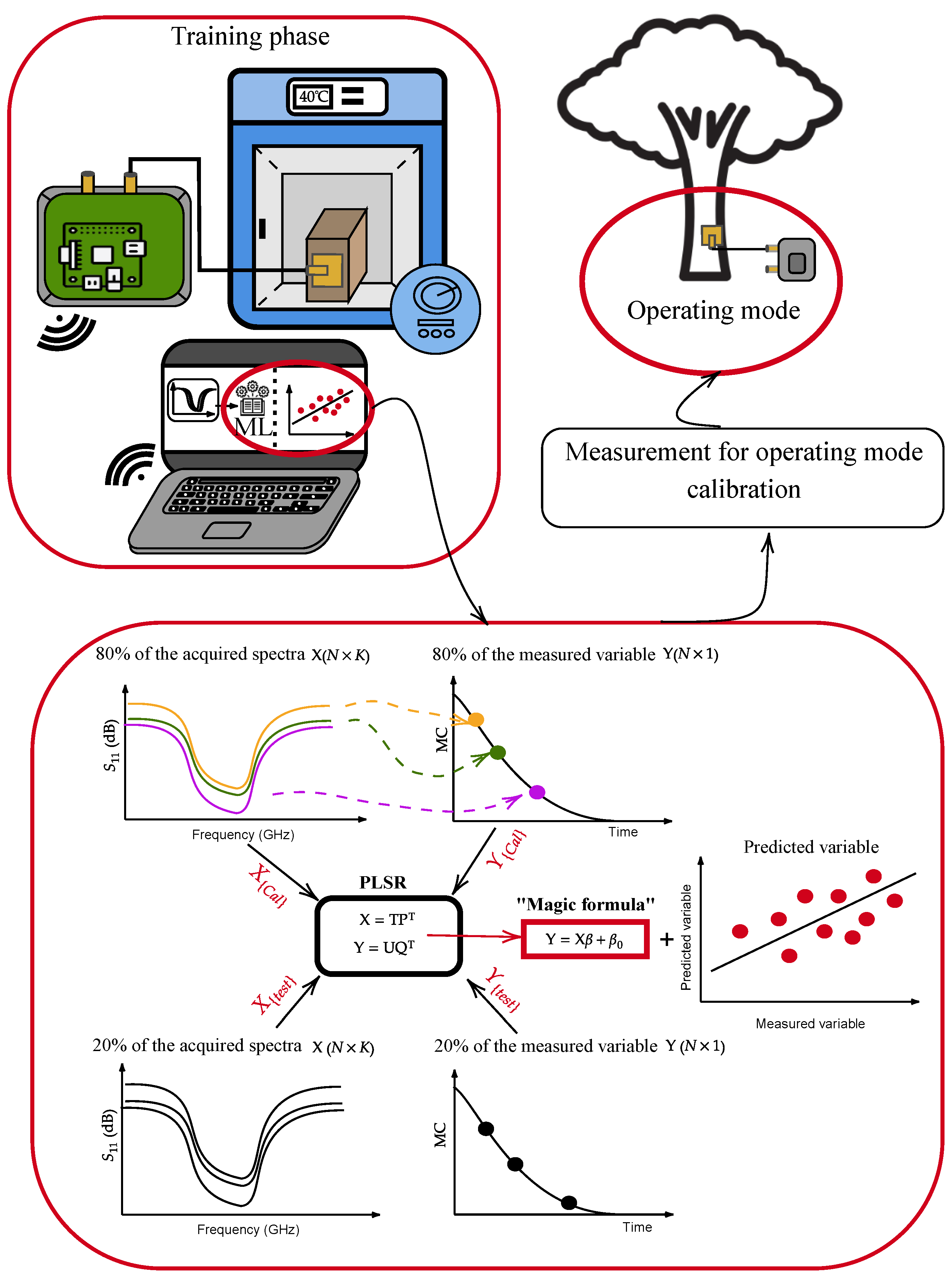

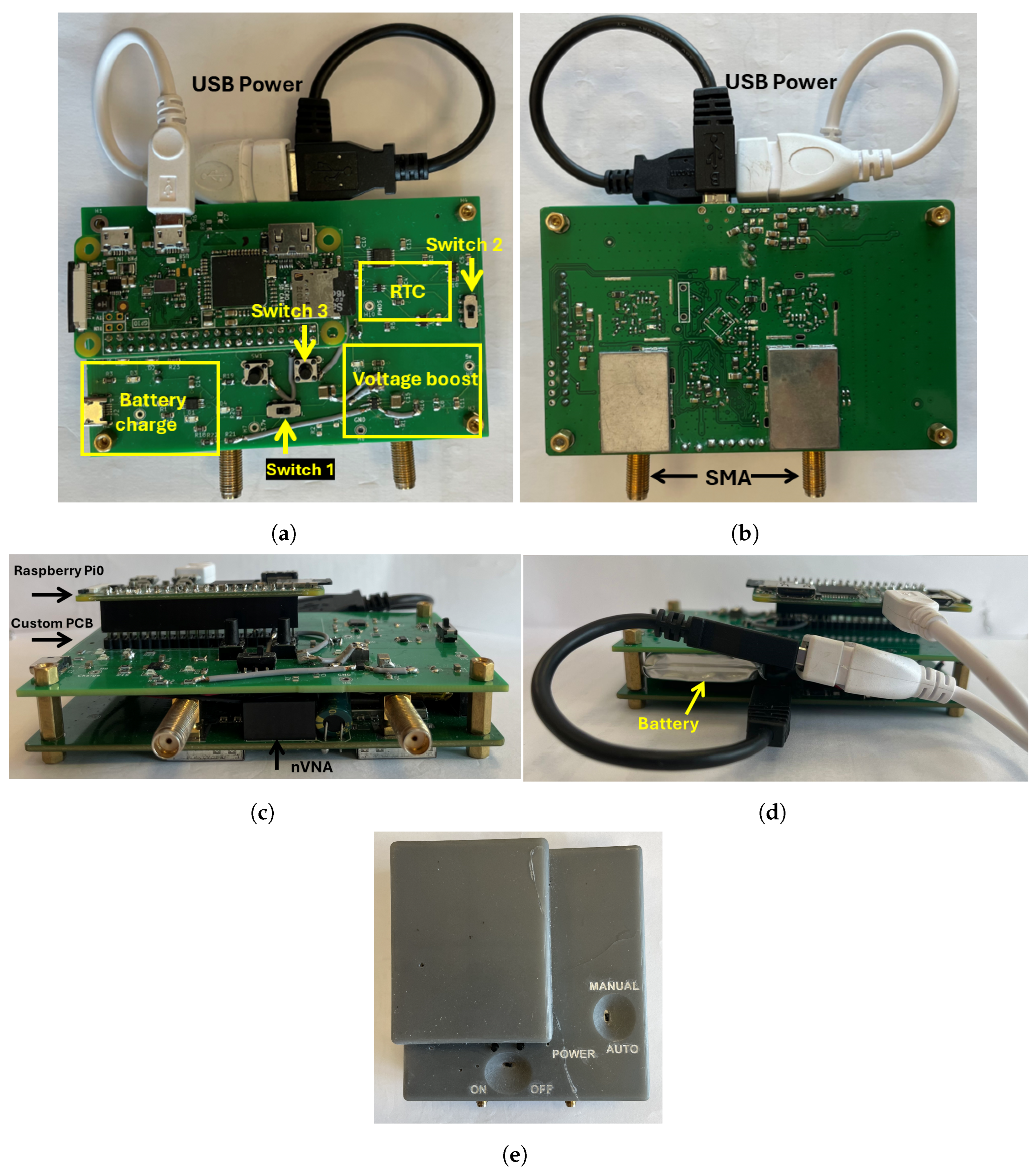
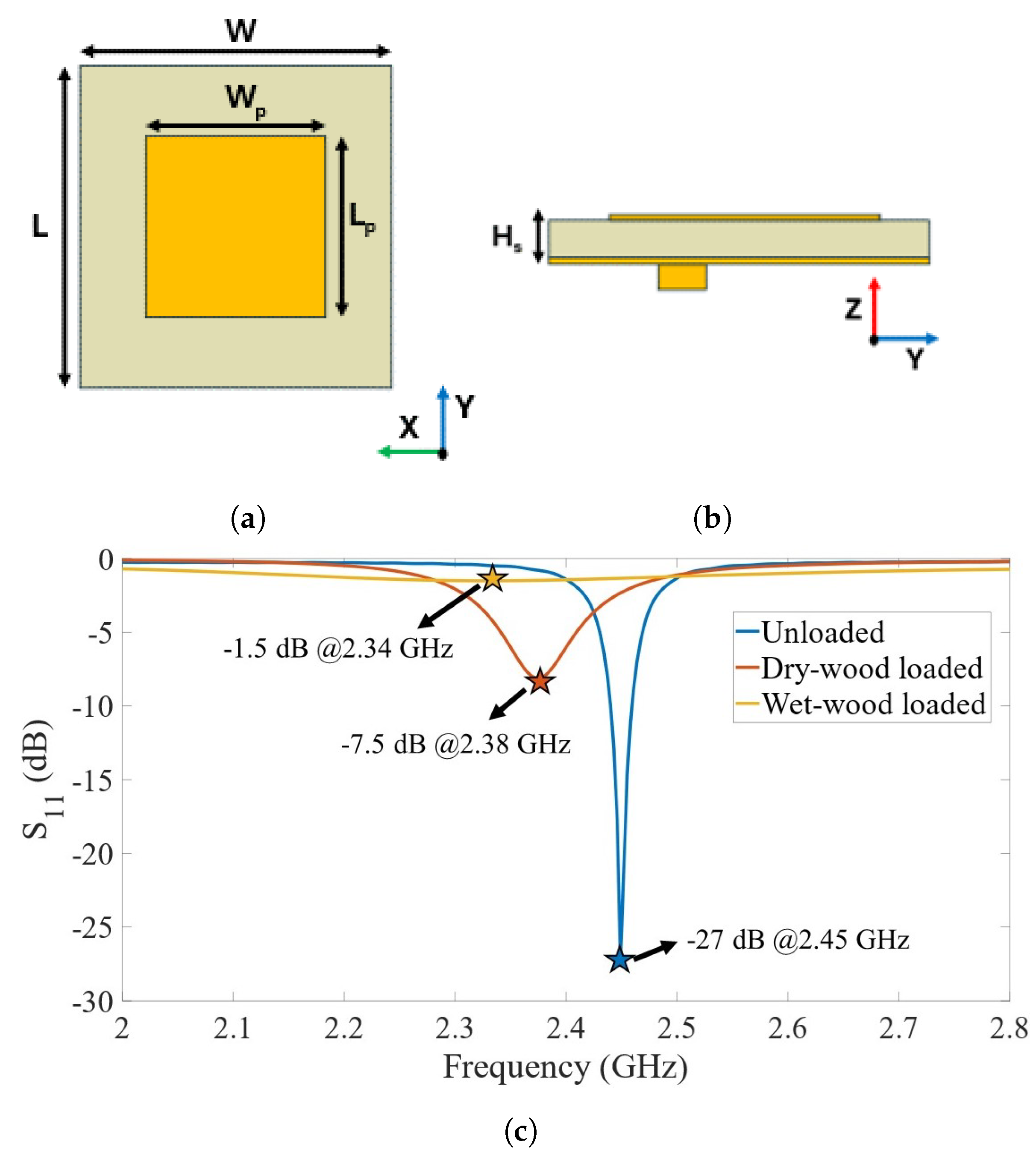


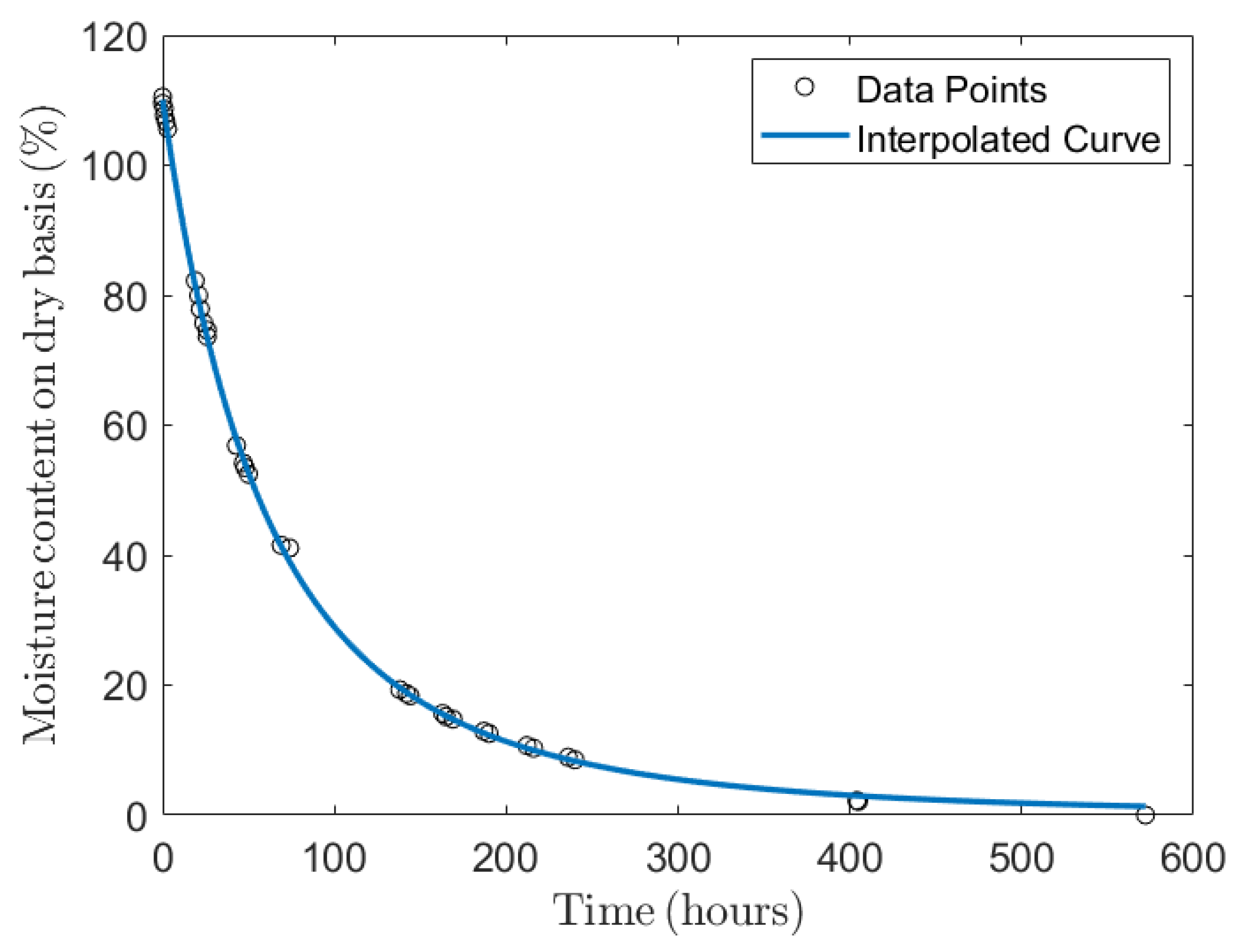


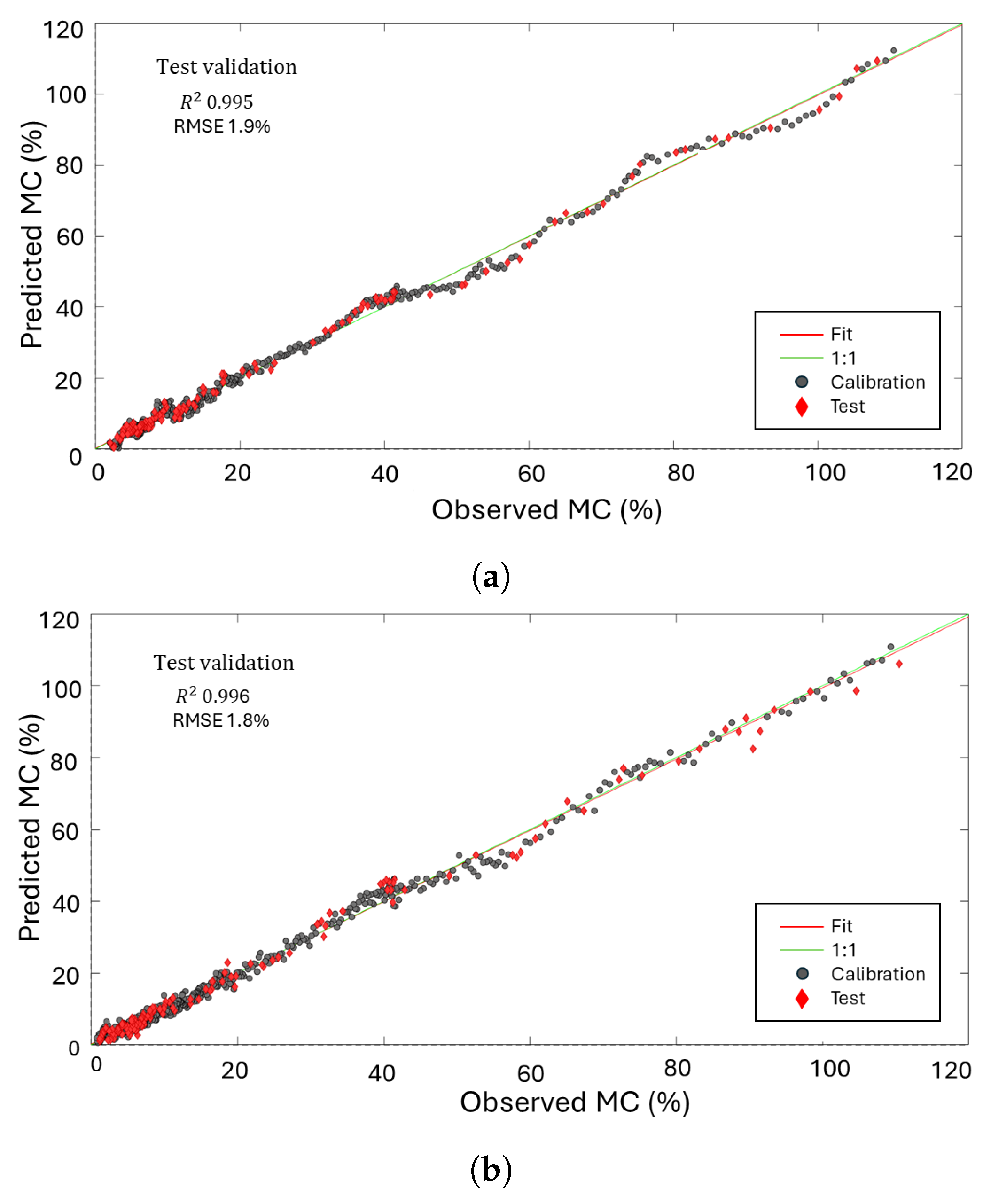
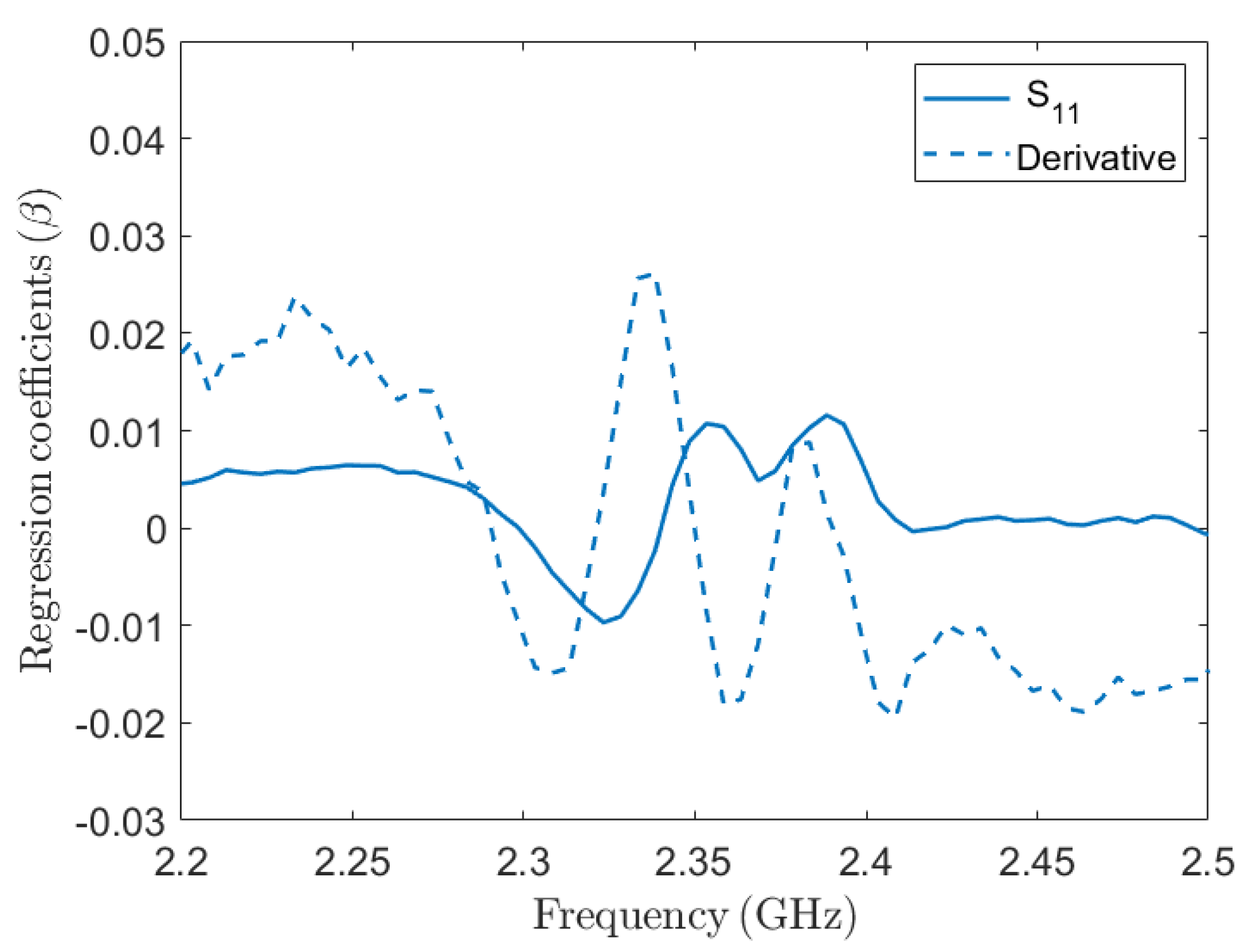
| Process | RMSE (%) | LVs | Bias | ||
|---|---|---|---|---|---|
| Calibration | |||||
| S11 | CV | 6 | |||
| Test | |||||
| Calibration | 0 | ||||
| CV | 6 | 0 | |||
| Test |
Disclaimer/Publisher’s Note: The statements, opinions and data contained in all publications are solely those of the individual author(s) and contributor(s) and not of MDPI and/or the editor(s). MDPI and/or the editor(s) disclaim responsibility for any injury to people or property resulting from any ideas, methods, instructions or products referred to in the content. |
© 2024 by the authors. Licensee MDPI, Basel, Switzerland. This article is an open access article distributed under the terms and conditions of the Creative Commons Attribution (CC BY) license (https://creativecommons.org/licenses/by/4.0/).
Share and Cite
Afif, O.; Franceschelli, L.; Iaccheri, E.; Trovarello, S.; Di Florio Di Renzo, A.; Ragni, L.; Costanzo, A.; Tartagni, M. A Versatile, Machine-Learning-Enhanced RF Spectral Sensor for Developing a Trunk Hydration Monitoring System in Smart Agriculture. Sensors 2024, 24, 6199. https://doi.org/10.3390/s24196199
Afif O, Franceschelli L, Iaccheri E, Trovarello S, Di Florio Di Renzo A, Ragni L, Costanzo A, Tartagni M. A Versatile, Machine-Learning-Enhanced RF Spectral Sensor for Developing a Trunk Hydration Monitoring System in Smart Agriculture. Sensors. 2024; 24(19):6199. https://doi.org/10.3390/s24196199
Chicago/Turabian StyleAfif, Oumaima, Leonardo Franceschelli, Eleonora Iaccheri, Simone Trovarello, Alessandra Di Florio Di Renzo, Luigi Ragni, Alessandra Costanzo, and Marco Tartagni. 2024. "A Versatile, Machine-Learning-Enhanced RF Spectral Sensor for Developing a Trunk Hydration Monitoring System in Smart Agriculture" Sensors 24, no. 19: 6199. https://doi.org/10.3390/s24196199
APA StyleAfif, O., Franceschelli, L., Iaccheri, E., Trovarello, S., Di Florio Di Renzo, A., Ragni, L., Costanzo, A., & Tartagni, M. (2024). A Versatile, Machine-Learning-Enhanced RF Spectral Sensor for Developing a Trunk Hydration Monitoring System in Smart Agriculture. Sensors, 24(19), 6199. https://doi.org/10.3390/s24196199







